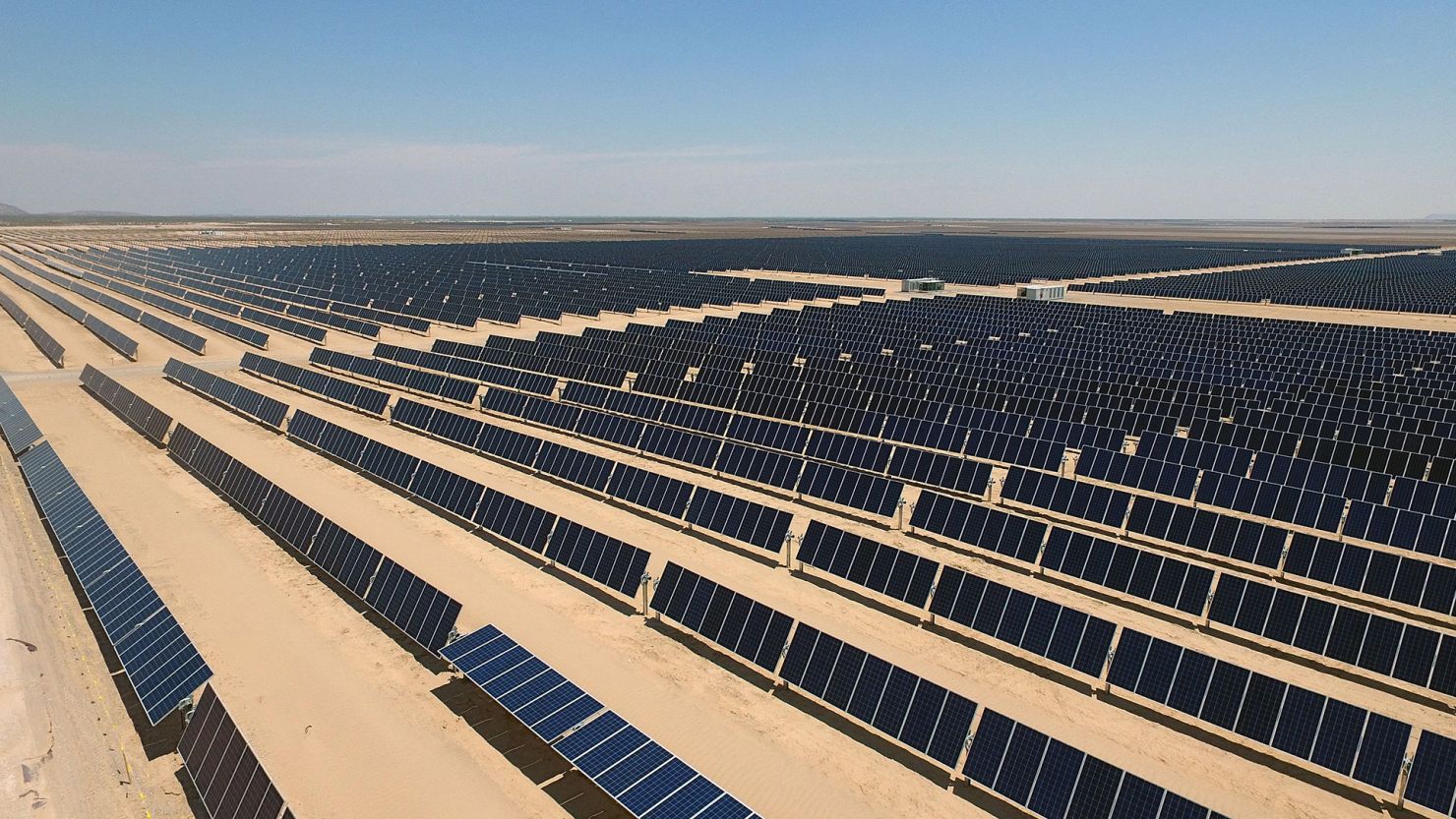(CNN) — The world has passed a milestone in clean energy: according to new data, 30% of the world's electricity produced by renewable energy last year led to an increase in wind and solar power.
The planet is reaching a “critical turning point” towards clean energy. According to a Global Electricity Review report Climate think tank Ember made the announcement on Wednesday. The group predicts that global production of fossil fuels will decline slightly in 2024.
This is an important step for the world Reach 60% renewable electricity by 2030According to Dave Jones, Director of Global Insights at Ember, that's critical to achieving global climate goals.
“The future of renewable energy is here,” says Jones. “Solar energy, in particular, is accelerating faster than anyone thought.”
A look at the data reveals the extent to which the global energy sector is changing.
Renewable energy registration
In 2000, renewable energy accounted for less than 19% of the world's combined energy sources. Now they represent more than 30%. Including nuclear power, the world produced nearly 40% of its electricity from low-carbon sources last year.
Although global planet-warming pollution will hit an all-time high in 2023, the rise of renewables has caused the power sector's carbon intensity — the amount of carbon pollution produced per unit of electricity — to reach an all-time low of 12% in 2023. Less than its 2007 peak.
According to the report, the rise of renewable energy is also pushing fossil fuels into decline, cutting their growth by nearly two-thirds over the past decade. In more than half of the countries, electricity generated from fossil fuels peaked five years ago.
The share of fossil fuels in total electricity has declined from 64.7% in 2000 to 60.6% in 2023. Ember predicts that this figure will drop significantly to 57.6% in 2024, when solar energy starts to see a rapid rise.
“We're going to have this renewable boom that's really going to change the landscape very quickly,” Jones told CNN.
Solar energy boom
Solar energy was the fastest growing source of electricity in 2023 for the 19th year in a row, the report said. Last year it produced twice as much electricity as coal.
A significant increase in solar installations occurred at the end of 2023, so the full effect has not yet been felt, Jones said. “I think there will be some shock when we start seeing those numbers in 2024,” he said, especially among those who expect demand for fossil fuels like gas to continue to grow.
Although coal and gas still make up the majority of global electricity generation, their growth rate last year was much slower than that of wind and solar.
“The pace of expansion of solar and wind energy is remarkable and a sign that society can make rapid changes,” said Niklas Höhne, a climate scientist at the nonprofit NuClimate Institute who was not involved in Ember's research.
Had it not been for the significant decline in hydropower generation due to drought in countries such as China and India, the growth of renewable energy would have been even higher, the report said. Most of the shortfall was covered by coal.
China is leading the way
China has so far Solar Energy LeadAlmost 36% of global generation last year.
However, the share of solar energy in China's domestic electricity generation is very different: only 6%, much lower than many other solar energy producing countries.
According to the report, solar energy provides more than 10% of annual electricity generation in 33 countries, including Chile (30%), Australia (17%) and the Netherlands (17%). California, the fifth largest economy in the world, generates 28% of its electricity from solar power.
Power demand is expected to increase
Global electricity demand will hit a record high in 2023 — adding up to the equivalent of all of Canada's electricity demand — but the pace of growth has slowed compared to the average over the past decade.
China is the main driver of demand, while the United States and the European Union have seen sharp declines due to mild weather, especially in the case of the European Union, a temporary drop in industrial activity.
According to Ember analysis, electricity demand will increase from 2024 onwards. Electric vehicles, heat pumps and electrolysis – a process used to produce green hydrogen, the most popular form of clean energy – will increase demand, along with technologies such as air conditioning and artificial intelligence.
According to the report, the spread of these technologies will increase electricity demand growth, but overall demand will decrease as electrification becomes more efficient than fossil fuels.
Overall, Ember's report is “encouraging,” says Nancy Hagel, a research consultant at the National Renewable Energy Laboratory who was not involved in the analysis. “It shows that we can generate significant amounts of electricity with renewable energy.”
The question is whether the pace of change will be enough, he told CNN. “Decisions over the next 10 years are important.”





